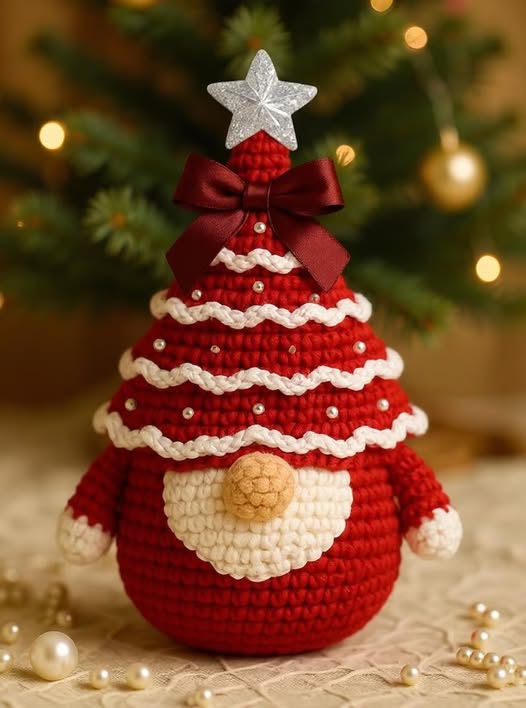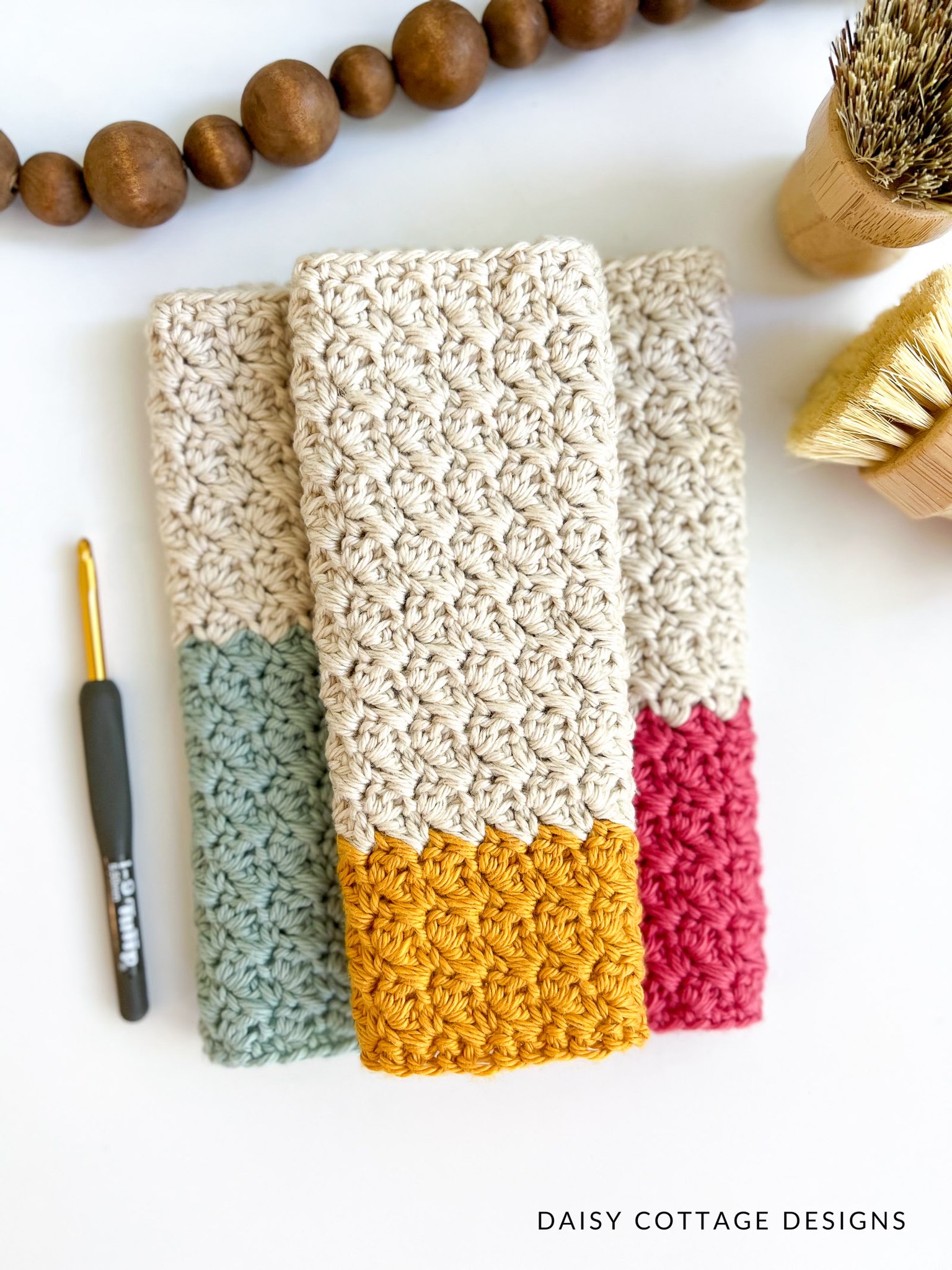
If you are looking for a versatile and visually appealing stitch, this How to Crochet the Suzette Stitch – Easy Tutorial will guide you step by step.
The Suzette stitch is a simple yet elegant crochet pattern that creates a textured, dense fabric ideal for scarves, blankets, and even sweaters.
Its unique combination of single and double crochet stitches produces a chevron-like effect, making any project look intricate and professional. Whether you are a beginner or an experienced crocheter, this tutorial will help you master the Suzette stitch with confidence.

The beauty of the Suzette stitch lies in its simplicity and flexibility. With only two types of basic stitches, you can create a fabric that appears complex and elegant.
The stitch is perfect for using up leftover yarns or creating striking multicolor projects. You can customize the look by changing yarn thickness or hook size, giving your creations a completely different texture and drape. Following this easy tutorial ensures that your Suzette stitch projects are consistent and polished.
This How to Crochet the Suzette Stitch – Easy Tutorial also focuses on common challenges beginners face, such as maintaining stitch tension, counting rows accurately, and joining colors seamlessly. By mastering these techniques, you will be able to confidently create a wide variety of Suzette stitch projects. Step by step, this guide will transform your crochet skills, allowing you to craft professional-looking items that are both functional and beautiful.
Before starting this How to Crochet the Suzette Stitch – Easy Tutorial, gather the essential materials and tools. You will need medium-weight yarn, a matching crochet hook, a yarn needle, and scissors. Selecting the right materials is crucial to achieving the best texture and drape for your projects.
Choose yarn in your preferred colors. The Suzette stitch looks especially striking in contrasting shades, but a single color also highlights its subtle texture. Acrylic or cotton blends work well for most projects, offering both softness and durability.
Select a crochet hook that matches the yarn label. If you prefer looser stitches, go one size larger to keep your fabric flexible. A well-fitting hook ensures your stitches remain even and consistent.
A yarn needle is essential for weaving in ends neatly after completing your project. This helps give your work a polished finish. Scissors are necessary for cutting yarn when changing colors or finishing off rows.
Optionally, you can use stitch markers to help track rows and maintain consistency in stitch counts. These are especially useful for larger Suzette stitch projects, such as blankets or shawls.
Lastly, prepare a flat workspace and good lighting. Working in a well-organized area makes following this easy tutorial much more enjoyable and efficient.
The first step in this How to Crochet the Suzette Stitch – Easy Tutorial is creating a foundation chain. Begin with an even number of chains, plus one additional chain for turning. This ensures your stitch pattern aligns perfectly across the row.
Row one starts with a single crochet in the second chain from the hook. Alternate single crochet and double crochet stitches across the foundation chain. This combination forms the unique texture of the Suzette stitch.
For row two, chain one, turn your work, and continue alternating single and double crochet stitches, placing them into the corresponding stitches from the previous row. This staggered placement is what creates the characteristic chevron-like texture.
Continue repeating these rows until your piece reaches the desired length. Consistency in tension and stitch placement is essential to maintain an even and professional appearance.
Changing colors is optional but can enhance the visual effect of the Suzette stitch. Simply join the new yarn at the beginning of a row and continue the alternating stitch pattern.
After completing your project, fasten off the yarn and weave in all ends using a yarn needle. This ensures a clean, finished look and prevents unraveling.
Achieving the best results with this How to Crochet the Suzette Stitch – Easy Tutorial requires attention to detail and consistent practice.
Maintain an even tension throughout your work. Uneven stitches can distort the chevron pattern and make your piece appear lopsided.
Counting stitches carefully at the end of each row helps prevent mistakes that can affect the entire project. Use stitch markers to make counting easier.
Blocking your finished piece can enhance the texture and shape of the Suzette stitch. Wet-blocking or steam-blocking gently sets the stitches for a professional look.
Experiment with different yarn weights and hook sizes. A bulkier yarn produces a thicker, cozier fabric, while a finer yarn creates a delicate and intricate appearance.
Practice switching colors seamlessly. By alternating shades every few rows, you can create striking stripes and highlight the stitch’s unique texture.
Finally, don’t rush. The Suzette stitch is forgiving, but taking your time ensures consistency and enhances the overall quality of your project.
The Suzette stitch is incredibly versatile and can be adapted for a wide variety of crochet projects. Scarves, shawls, and blankets are excellent choices for showcasing the stitch’s texture and pattern.
This stitch also works beautifully for hats, mittens, and other wearable items. Its dense fabric keeps warmth in, while the textured pattern adds visual interest.
Home decor items such as cushions, throws, and table runners benefit from the Suzette stitch’s unique appearance. Using contrasting colors or ombre gradients adds depth and sophistication.
Combining the Suzette stitch with other crochet patterns can create dynamic, layered effects. Pairing it with simple stitches like single crochet or half double crochet can highlight its texture.
The stitch is also suitable for beginner-friendly projects, as it only requires mastering single and double crochet stitches. With consistent practice, even new crocheters can achieve professional-looking results.
Finally, this easy tutorial encourages creativity and experimentation. Adjust colors, sizes, and yarn types to customize your projects, making each creation unique and personal.
1. Is the Suzette stitch suitable for beginners?
Yes. The Suzette stitch only uses single and double crochet stitches, making it accessible for beginners while producing an elegant texture.
2. What yarn works best for the Suzette stitch?
Medium-weight acrylic or cotton blends are ideal. Softer yarns create a comfortable, flexible fabric, while sturdier yarns provide durability.
3. How do I count stitches in the Suzette stitch?
Always count your stitches at the end of each row. Use stitch markers if necessary to ensure accuracy, especially for larger projects.
4. Can I change colors in the middle of a project?
Absolutely. Join a new yarn color at the beginning of any row and continue alternating single and double crochet stitches as usual.
5. What projects are ideal for the Suzette stitch?
Scarves, blankets, shawls, hats, and home decor items are all great choices, as the stitch creates a dense, textured fabric.
6. How do I maintain consistent tension?
Practice keeping your yarn and hook movement even. Relax your grip and use the same hand positioning for each stitch to ensure uniformity.
7. Should I block Suzette stitch projects?
Yes. Blocking can enhance stitch definition, even out edges, and improve the overall look of your finished piece.
Mastering the Suzette stitch opens up endless possibilities for crochet projects. This How to Crochet the Suzette Stitch – Easy Tutorial has shown you how to create the unique chevron texture, maintain consistent tension, and apply the stitch to scarves, blankets, and other items.
By following this step-by-step guide, you can produce professional-looking pieces that are both functional and visually stunning.
Try experimenting with yarn types, colors, and combinations to make each Suzette stitch project your own. Share your results, provide feedback, and inspire others to explore the beauty of the Suzette stitch.
